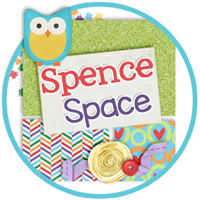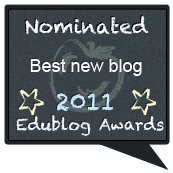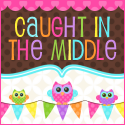Unlike my students, I remember the first time I had ever heard of the web phenomenon of "Google" and when I was a student, it was only a search engine. With the lofty goal of "organiz(ing) the world’s information and mak(ing) it universally accessible and useful," Google has become so much more for this generation of students.
My question for you is this: Are you using Google for all it's worth?
I have two separate Google accounts, one of which many people do not realize is available. I have a traditional Google account linked to my Gmail address that I use for this blog, a Google + account, and various other personal uses. I also have an account without email privileges that is linked to my school domain email address. Many of my fellow educators did not even realize that this was possible until the Technology Department at our school started setting them up for interested parties. With this login, I can create all sorts of resources linked to my school address and with all of the resources that come with it.
Here are some things to consider trying with your Google login:
Google hosts free websites. If you ever considered running a class website, Google is a really easy way to jump in and try things out. Each Google website is free and has available templates for less experienced users. These sites are also seamlessly linked to your other Google resources. Once a teacher or student is logged in with their account, they can leave comments, download resources or even edit the site itself if you grant permissions to them.
Google hosts free blogs. Blogger is Google's blog-hosting site and it is totally free. It is also linked to all other Google resources, so once you have logged into your site or Gmail, you are also logged in for Blogger. Depending on the comfort level of the user, a beginner can set up a full template with little customization and simply enter text, or more experienced users can add art, gadgets and HTML code for a fully personalized look and functionality.
Google is great for sharing. Whether you upload documents for sharing through Google Docs or you create a class network in Google +, there is no easier way to compile all the resources needed for collaborative teaching with students and colleagues. Instead of sending students to various sites for viewing pictures, videos, documents and other resources, connecting sites and networks through Google takes away much of the legwork.
Google makes basic functions easy and interconnected. Through your Gmail or regular Google account, you can set up calendars, task lists, events and reminders. This may seem like something elementary that is offered by many email providers, but again, the key with Google is the interconnected nature of the functions. Google is also designed to be very compatible with mobile devices, particularly Android devices. This means that events, calendars and reminders from your Google account can come through your smartphone and several apps, such as Twitter and Facebook.
Google hangouts connect students. With Google's video chat product, students can connect anytime, anywhere. Particularly in schools like ours where students are often geographically separated, it makes collaboration much easier. Students can also hold their meetings in an environment that is conducive to the assignment and with their materials readily available rather than at a library table or in the classroom.
The cloud is the way of the future. Everyone has experienced that crippling fear of losing a document, disc, thumb drive, etc. With cloud computing, documents, music files, pictures, and presentations can be stored in huge allotments of memory space through Google. When files are backed up on the cloud, they are available to users on any internet-connected computer and are safely stored on Google servers.
Most of us have Google accounts already, so make sure that you are using it to its fullest potential!





















































